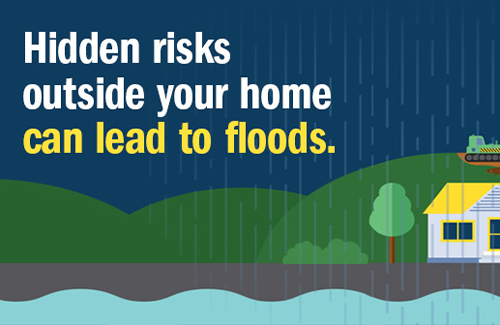Flooding can happen anywhere, even if you’re far from a water source. In fact, towns, cities, and suburbs have hidden flood risks that can put local homes and businesses in danger. Use these talking points to educate your community about the hidden flood risks in their area:
- New developments. Towns, cities, and suburbs have more structural development and fewer places for water to go. This means a hard rain can become a flash flood in minutes. Whether it’s the development of new apartment buildings, or backyard renovations to your home, construction can increase your chances of flooding.
- Small streams or creeks. A storm can cause the smallest of streams or creeks to overflow and flood the surrounding area. Overflow can also travel miles from its point of origin, causing damage to homes far from the source.
- Drainage systems. Cities and suburbs have more concrete, which can’t absorb water. Limited or outdated drainage systems, increased rainfall, and aging city infrastructure can cause damaging runoffs and overflows.
- Changing weather patterns and severe storms. Storms are becoming more frequent and more intense. As a result, a community can quickly become overwhelmed by flood water within a short period of time.
When talking to potential clients, remember most city residents are renters. Remind them neither their renters’ insurance, nor their landlord’s flood insurance, will cover their belongings in the event of a flood. Emphasize the best way to protect the life they’ve built is by purchasing flood insurance.
Visit floodsmart.gov for more free marketing resources you can use when talking to clients about urban flood risks.

